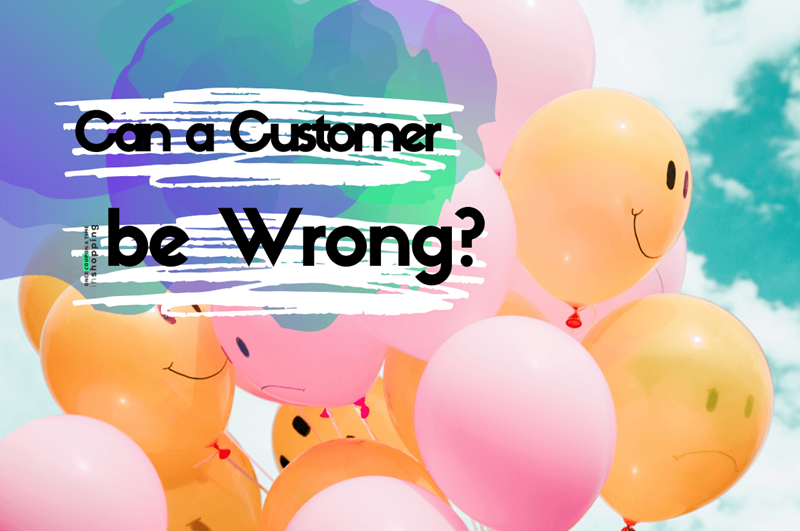
Of course, it is our right as customers to make a complaint when we are not satisfied with the service we have paid for. But the rising popularity of online shopping means a much longer supply chain. When we shop online, our items pass through so many stages. Even the delivery process itself means that lots of people in different neighborhoods, cities or even countries work on the delivery process that will bring the item to our door. So, even though it is within our rights to expect the best service possible, it shouldn’t be a total surprise when things don’t go as well and as smoothly as we would like them to go. This recent shift in customer expectations causes brands to change their attitude towards customers, too. They feel obliged to step away from the old saying “The customer is always right” in order to assess customer satisfaction via concrete data, which will help them develop the right customer relations strategy.
How Do Brands Assess Customer Satisfaction?
There are several methods available. Each method poses different sets of questions to customers and calculate the level of satisfaction based on their answers. For instance, Customer Satisfaction Score (CSAT), which is one of those methods, simply ask customers about their level satisfaction regarding the product or service they have purchased.
The Net Promoter Score (NPS) method asks customers the following question. “How likely are you to recommend this good/service to your friends and family members?” Based on their answers, the customers are categorized as “promoters”, “passives” and “detractors”. Customer Effort Score method asks customers questions to measure the effort exerted by a customer to attain the goods/services and calculates a satisfaction score based on their answers.
Each brand employs a different method to assess customer satisfaction. Nowadays, we are expected to rate our experience as customer right after we purchase a product or service, whether it be shopping on a platform like Amazon, getting an Uber or taking a flight. Our inboxes are full of customer satisfaction surveys, which shows how important it is for brands to assess customer satisfaction.
Five Types of Customers
Studies conducted on this subject show that customers tend to behave in similar ways. Based on these similarities, customers can be categorized into these five groups: loyal customers, impulse customers, discount customers, need-based customers and wandering customers. For instance, loyal customers generate a larger portion of sales for most brands even though they are small in numbers. Wandering customers are the opposite. They are high in number, but they bring a very small portion of sales. Discount customers and need-based customers are the types of customers a brand is more likely to lose. This classification based on customer behavior helps brands better understand their customers and develop their strategies accordingly.
What Makes A Brand Successful Is Its Customers
According to marketing expert Peter Fader, the customer isn’t always right, but some customers are better than others. In his two books and TEDx speech, Fader talks about being “customer-oriented” and he brings a different approach. He suggests that brands should mostly focus on the customers who bring value to their brand rather than trying to please all customers.
Fader claims that the most efficient way for brands to develop a successful marketing strategy is to better understand the customers who bring value to the brand and to try their best to cater to their needs. Achieving this, of course, is only possible when you can calculate the value that each customer brings to the brand. Calculating the customer value is the easiest way of estimating which customers are more likely to make another purchase in the future, how often they are going to make a purchase and how much money they are going to spend. In the end, brands who are not able to assess their customers’ value and use it to their advantage can’t survive in the long run. That’s why “The customer is always right,” isn’t an approach that benefits brands. It is their priority to find out which customers are worthy enough to have that right.
A Different Take On “The Customer Is Always Right”
According to world-renowned bestselling author Yuval Noah Harari, we have started to realize how misleading popular and unquestioned phrases like “customer is always right” and “voter knows best” are. With Big Data becoming such a huge part of our lives, it would be a stretch to claim that our we are completely in charge of our own decisions and thoughts. Even all the fake news stories we keep seeing online are created according to each individual’s interests and search histories as well as their personal information. Given that liberalism and individualism are under such threat and that our decisions are far from being our own, it is obvious that phrases like “customer is always right” are doomed to be a thing of the past. Even though as customers, we think that we are in charge of everything when we are shopping, each of us is a tiny piece of the brand identity of the stores we prefer for shopping. We are right only as mush as the value we bring to their brand.
Even though it can be discomforting to think about these issues, as customers, we need to have a critical approach towards our own behavior. We need to be able to stay calm and re-evaluate our expectations constantly so that we can have the grounds for claiming we are right as a customer. Unless we are aware of responsibilities as customers, we can’t expect brands and stores to think that we are always right because it is not fair on both sides.
































REVİEWS - 0 reviews